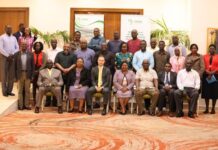The government of Zambia through a special Ministry of Agriculture committee has endorsed sustainable maize cropping practices for small-scale farmers.
The National Advisory Committee for the Approval/Validation of Candidate Technologies or Agronomic Practices announce its support towards diversifying maize-based farming systems. This was shown through the approval of three new systems for better yields and soil maintenance: growing maize between “hedge-rows” of legume trees; or in rows side-by-side with grain legumes as strip crops; or on permanent, raised soil beds or ridges.
The three systems feature conservation agriculture approaches which ensures minimum soil disturbance, maintains crop residues on the soil while growing a more diverse selection of crops.
Maize cropping methods
The improved maize cropping methods are a research outcome of the Sustainable Intensification of Smallholder Farming Systems in Zambia (SIFAZ) project, a partnership involving the Food and Agriculture Organization (FAO) of the United Nations, Zambia’s Ministry of Agriculture (MoA), and the International Maize and Wheat Improvement Centre (CIMMYT), with funding from the European Union (EU) and building in part on other results in Africa, including the Feed the Future-Africa Research in Sustainable Development for the Next Generation (Africa RISING) initiative.
“The official clearing of these transformative cropping technologies is a huge milestone for the project and for Zambia’s resource-poor farmers,” said Christian Thierfelder, CIMMYT principal cropping systems agronomist based in southern Africa who, as part of SIFAZ, is testing and disseminating maize cropping practices that boost harvests, enrich soils, and capture and conserve moisture. “We’re working closely with Zambia’s MoA and the FAO, planning research trials, demonstrations and promotion to reach 20,000 farmers as a first step.”









